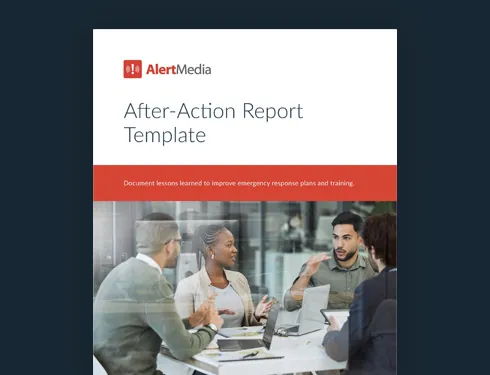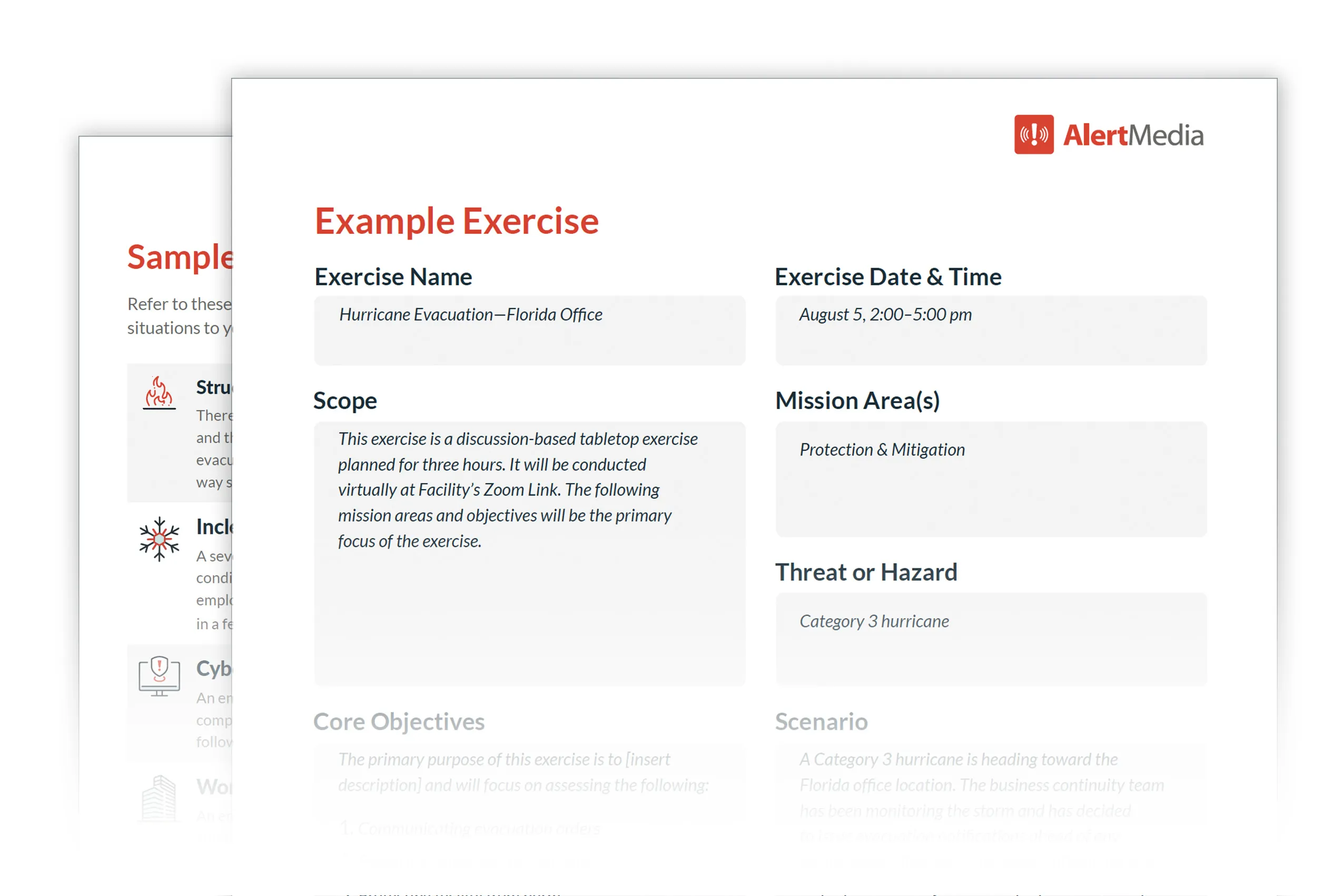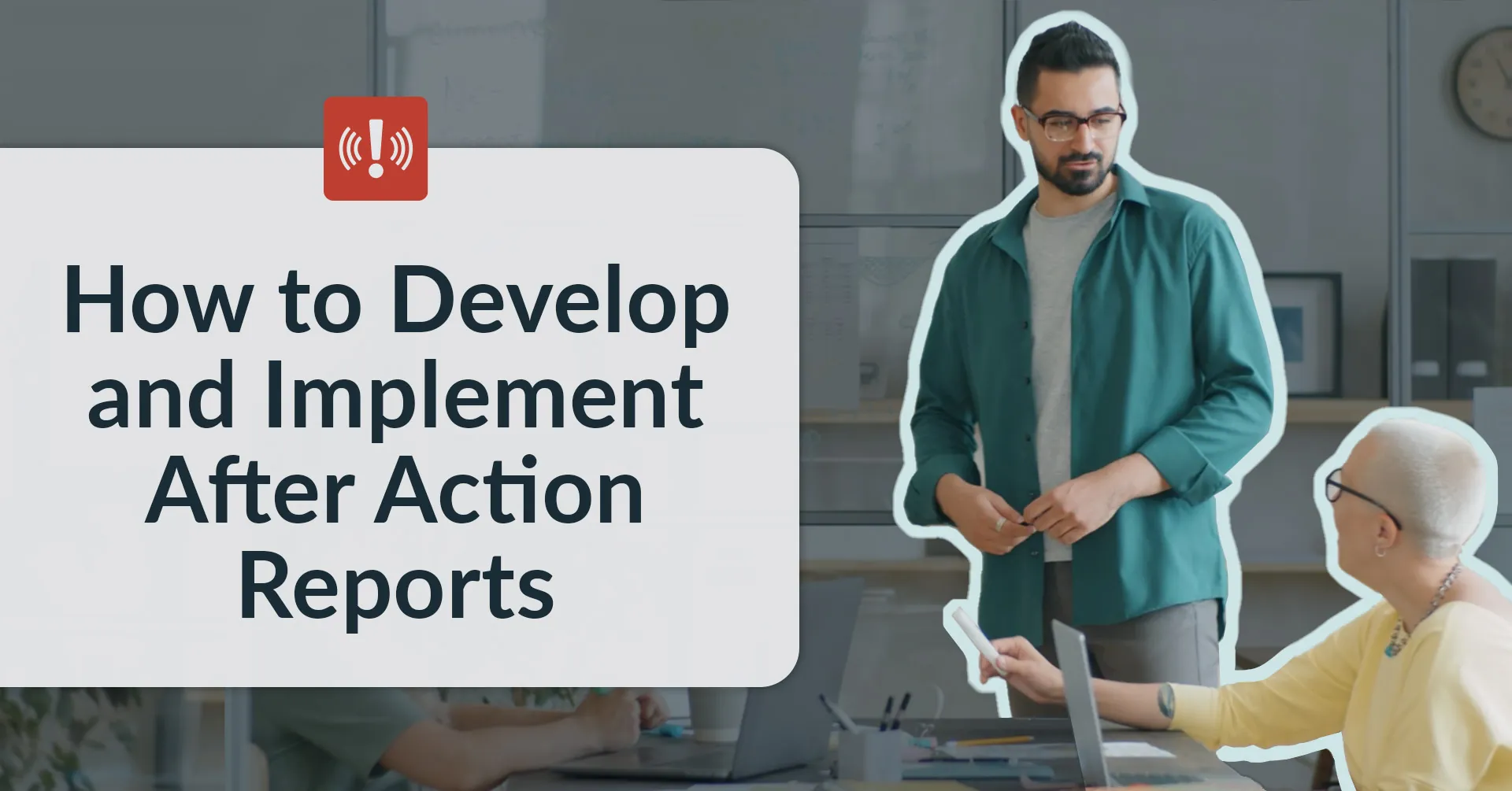
After-Action Review: Moving From Hot Mess to Hot Wash
Learn from past mistakes and successes alike with after-action reviews. Here are six strategies to maximize the value of reviews and reports.

Imagine you’re a supervisor at a construction site and your team just had a rough day. The plan was to hoist a cooling unit up to the roof, drop it into place, and start connecting it to the building’s HVAC system. Midway through the process, the crane operator’s walkie-talkie lost power. Rather than stop and reset, they powered through using visual signals. Luckily, no one was hurt. But it took three tries to seat the unit, one of the corners ended up dented, and everyone involved was frustrated.
When you’ve just wrapped up a tough situation, reviewing the details is probably the last thing you and your team want to do. But it’s also the most important. Without understanding what went wrong and why, you risk repeating the same mistakes in the future—possibly with even worse outcomes.
Enter the after-action review (AAR). By going through an incident with an eye on continuous improvement rather than laying blame, you can help guide your team to better outcomes. Let’s dig into what AARs are, why they’re important, and how your organization can benefit from them.
After-Action Report Template
What Is an After-Action Review?
An after-action review is a process to improve future outcomes by learning from past events and experiences. AARs focus on analyzing how intended goals compare to actual results and identifying ways to improve policies and procedures.
One of the most valuable aspects of AARs is how broadly applicable they are. With the basic initiative of comparing stated goals to actual outcomes, your organization can use the framework for a number of scenarios:
- Training exercises — Fire or evacuation drills generally have clear goals, such as getting your entire team to safety within a certain timeframe. AARs are a great way to drill into the details and find ways to shore up your team’s preparedness.
- Natural disasters — Whether it’s an earthquake, hurricane, tornado, or snowstorm, most organizations face natural disasters at least once every few years. Thoroughly reviewing how your team prepared and responded can help you be ready for the next time.
- Human-caused incidents — While you hope your team doesn’t have to deal with them, incidents like chemical spills or active shooter situations reveal a lot about your safety plans. An after-action review can help you prevent a repeat scenario down the road.
- Special events — Rare workplace projects like yearly conferences or using special equipment can be a learning experience. AARs help you document the knowledge you gleaned to ensure smoother projects and events in the future.
AARs might seem like they’re strictly a post-mortem of negative outcomes, but in actuality, they’re learning opportunities—and they apply to any situation, whether the outcome was good, bad, or neutral. Just as you can learn from mistakes to avoid repeating them, you can learn from successes to repeat and improve upon them.
While the AAR was originally developed by the U.S. Army (known as a hot wash), it has become a valuable tool for businesses of all shapes and sizes. Not all organizations will use precisely the same after-action review process or format—the U.S. Army’s after-action review will certainly be more formal than a startup’s, for example. But no matter your industry, there are a few key after-action review questions you should address:
- What was our objective and how did we plan to achieve it?
- What was the actual outcome?
- Why did we see the results we did?
- How can we be better prepared to reach a positive outcome in the future?
Once you’ve completed the AAR session, you’ll want to document the findings in an after-action report. You can share the information across your organization and use it to track progress over time. Download our easy-to-use template here.
Learn a step-by-step framework for developing an after action report to ensure your organization is prepared for any emergency scenario.
Why Are After-Action Reviews Important?
Every day, employees at your business make countless decisions. Most of those choices are inconsequential, but taken together, they shape your company’s future. At their core, AARs are a way to help your team understand not just the outcomes of their decisions, but also why the choices matter and how they can improve in the future.
Whether you’re conducting an after-action review after a failure or success, you’re capturing lessons for your organization.
AARs for successful events
Actions that yield positive outcomes are cause for celebration. But to make them repeatable, you need to understand the key events that led to the success. Imagine a pastry chef who showed up every morning and threw flour, sugar, and eggs into a bowl with no regard for measurements or ratios. They might produce delicious desserts every once in a while, but they wouldn’t know why, nor could they recreate them.
To sustain your company’s successes and improve team performance, you need to thoroughly understand why things went well, document them, then set your team up to repeat that success.
AARs for problematic events
Every organization deals with problems from time to time. Sometimes, errors are preventable and caused by human mistakes. Other times, situations are entirely out of your control.
What matters is how you react to minimize the chances of it happening again. Performing a thorough AAR after an emergency or failure allows you to see where things went wrong and update your emergency response plans to reduce the chances of it negatively impacting your business in the future.
How to Leverage AARs for Continuous Improvement
Here are six key strategies to maximize AARs’ value for your organization.
1. Make after-action reviews a habit
For AARs to be effective, you need to make them a regular part of your procedures, not just something to do when it’s convenient. Much like performing regular business threat assessments to prioritize preparation, implementing regular after-action reviews is an integral part of monitoring how you’re doing.
Two types of events necessitate an AAR:
Scheduled events: For anything that you can foresee—whether it’s a training exercise, a high-risk job, or the end of a long project—build an AAR into the schedule. When you conduct AARs as a part of the event, you can ensure everyone will be available to take part, rather than trying to line them up later.
Emergency incidents: Holding an AAR after an emergency can be more complicated, since there might still be recovery work to complete. And you might have to delay it a bit if key stakeholders are involved in recovery or cleanup efforts. Necessary delays aside, holding the AAR as soon as possible after an incident allows your team to capture the details of the event while they’re fresh and thoroughly document both the circumstances and decision-making processes involved.
2. Collect relevant data and resources
Much of the AAR will focus on the event itself, but nothing happens in a vacuum. Before you sit down to discuss what happened, collect all of the data and resources surrounding the events that led up to it.
These can vary widely based upon industry and what happened, but here are some common examples:
- Copies of the training programs employees went through before the event
- Safety manuals and documentation for machinery, chemicals, or other materials that were involved
- Environmental data such as temperature, humidity, precipitation, and lighting conditions
- Risk mitigation strategies that were already in place to cover the event in question
- Schedules, deadlines, and forecasts surrounding the event or project
- Incident reports or notices about similar events in the past
- An organizational chart reflecting who was the team leader and had the authority to make decisions at the time of the event
- Any OSHA guidelines that apply to the incident
3. Involve all key stakeholders
The goal of an AAR is to get a 360-degree view of what happened, why, and how to improve it. To get the clearest answer possible, you’ll want to involve not just the people who were a part of the event but also anyone else who’s an indirect stakeholder.
For example:
- The person or people who developed the training protocols that were in use before the event
- Representatives from other departments that are impacted by (or reliant upon) the event’s success
- External stakeholders such as clients or vendors who materially participated in the event or are affected by it
Once you’ve assembled the group, it’s critical to make sure everyone has a voice. Each member of the AAR discussion brings a different perspective and area of expertise, and you need to give all of them a platform to contribute, encouraging active participation.
4. Maintain a constructive environment
When you’re discussing mistakes, it can be easy for criticism to feel personal or for discussions to devolve into arguments. Not only would this make it harder to hold an effective AAR, but it also risks bigger problems in the future by sowing discontent and distrust among team members.
To prevent these issues, set ground rules beforehand:
- Anonymize comments. You want candor in the feedback process, but you need to protect your employees accordingly, especially if they’re commenting on supervisors’ performance. A facilitator can collect everyone’s comments anonymously and confidentially, then collate them into aggregated findings.
- Keep the focus on improving future outcomes. The goal is to learn and grow, not to assign blame or credit for what happened last time.
- Be as transparent as possible. While you do need to preserve anonymity and individual comments, everyone involved needs to believe that the process is fair, open, and produces an accurate accounting of what happened and how to improve in the future.
5. Disseminate the findings
Once you’ve agreed on all of the key after-action review questions, make the information freely available throughout your organization. While all of the key stakeholders were involved in the process, sharing the findings will help other members of your company learn from the results.
There are a few ways to approach knowledge sharing and maximize the value to your organization:
- Release all relevant information of an AAR report, but summarize the key points into an easily-digestible format
- Make sure that company leaders use the information to update policies like business continuity plans
- Adjust training or HR resources as needed to reflect what your team found during the AAR
- If you need to report to any external organizations—such as OSHA or industry regulatory bodies—ensure that your company’s point person has the full details of the AAR at their disposal
6. Put what you learned into action

The last phase of an AAR is to close the feedback loop by putting your findings to the test. Did you discover the root causes of your last experience’s successes and failures? And will your actionable recommendations produce the intended results?
There are some situations you can’t recreate, nor would you want to. If your AAR was the result of a medical emergency or hazmat situation, you hope that you won’t have to put your newfound knowledge to the test anytime soon.
However, you can use emergency drills and training exercises to review your AAR’s results and model how your team would react in the future. Tabletop exercises are a great way to talk through a variety of scenarios and discover details you may have missed.
With each training exercise, you have the opportunity to hone in on ideal outcomes by repeating the AAR process. Debrief, assess what could have gone better, create action plans for future projects and emergencies based on your learnings, and follow-up on your recommendations accordingly.
Using the Past to Shape the Future
“Those who cannot remember the past are condemned to repeat it” is often misquoted and misattributed (George Santayana, 1905), but the point remains the same. Knowledge from past experiences—both positive and negative—is a critical building block for positive outcomes in the future.
AARs are a great way to make the most of your organization’s past. By analyzing both your successes and failures, you maximize your chances of improving upon the former and avoiding the latter. Mistakes will still happen, but by leveraging AARs, you’ll keep your team on the path to the safest future possible.




